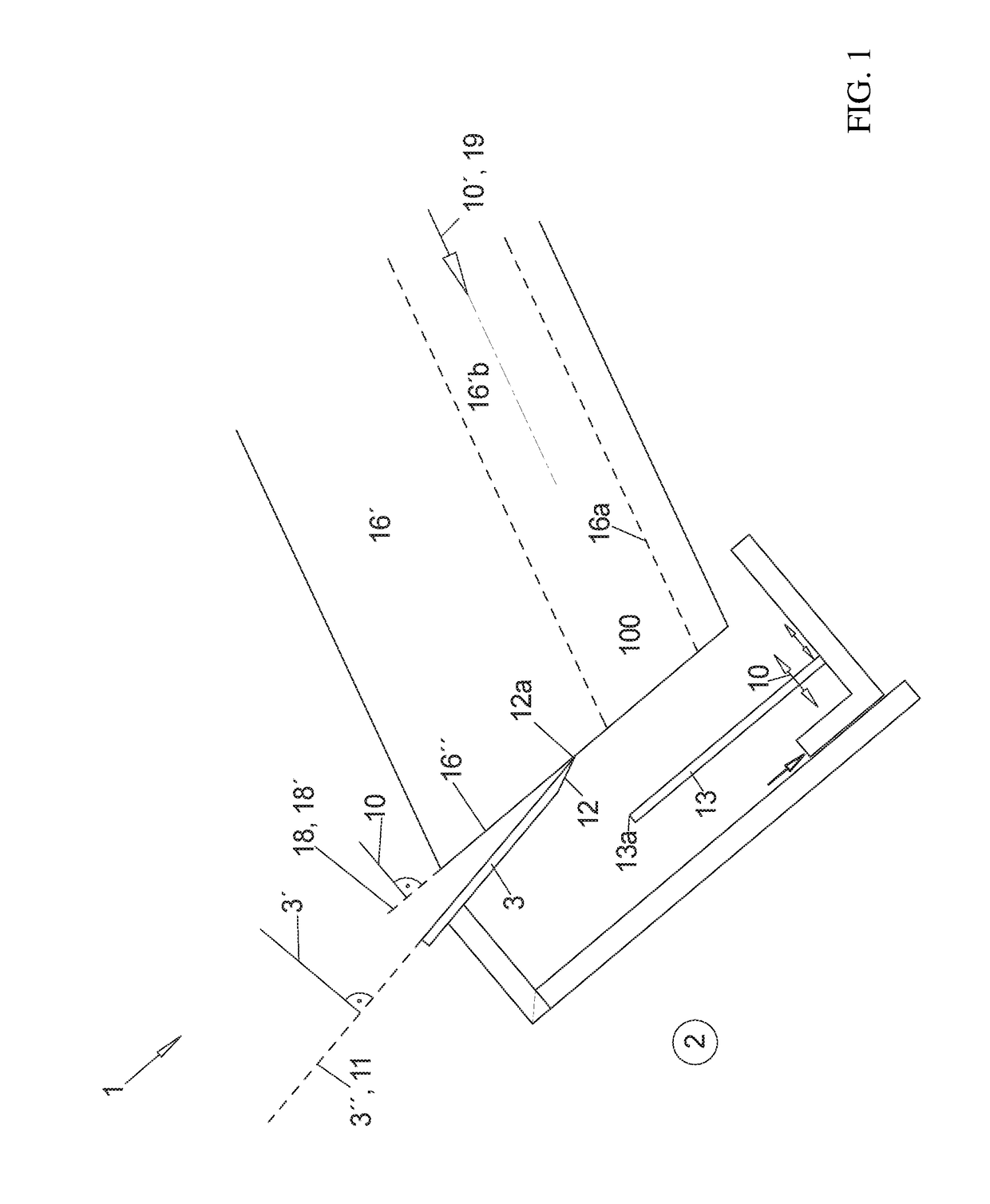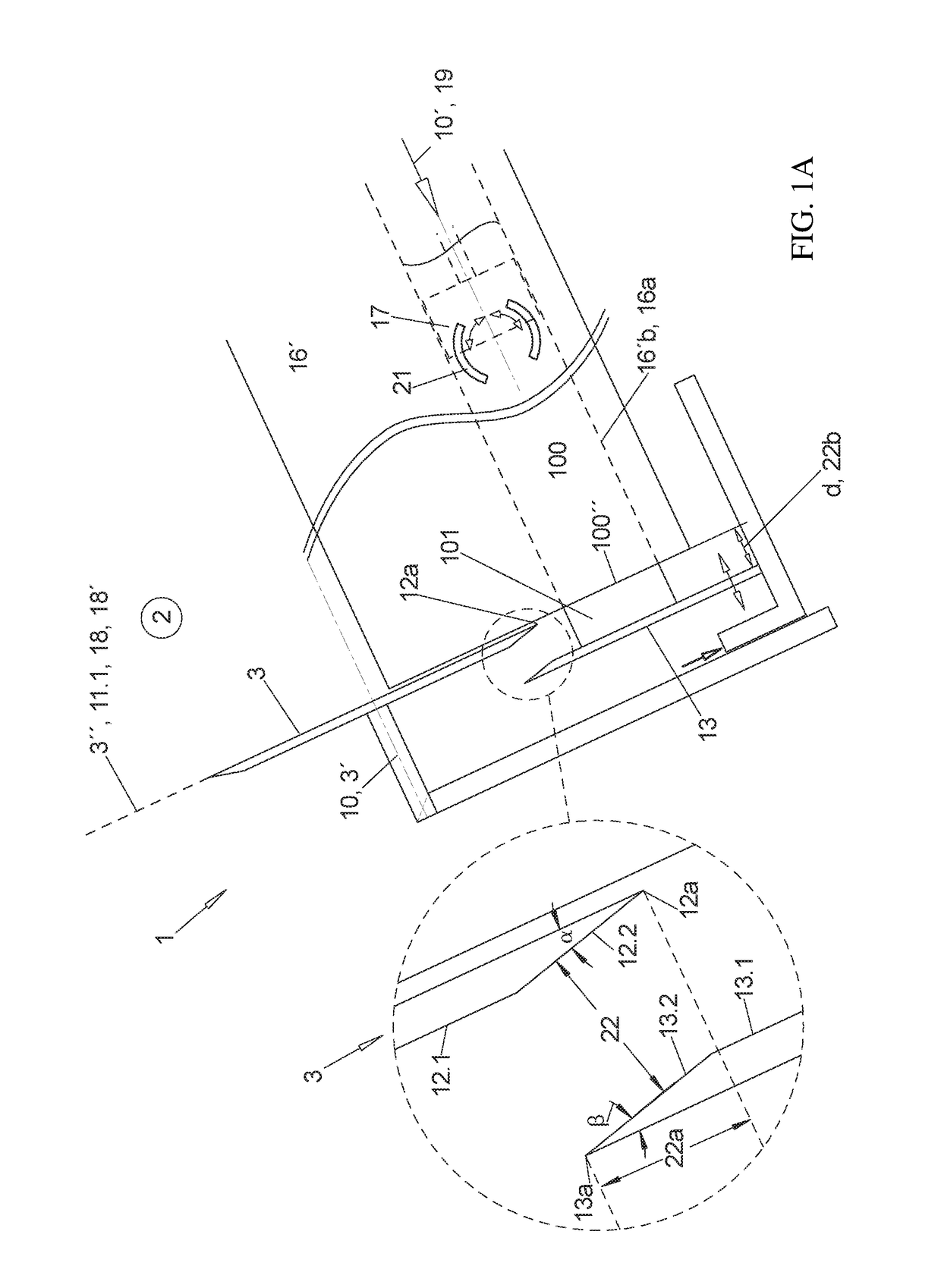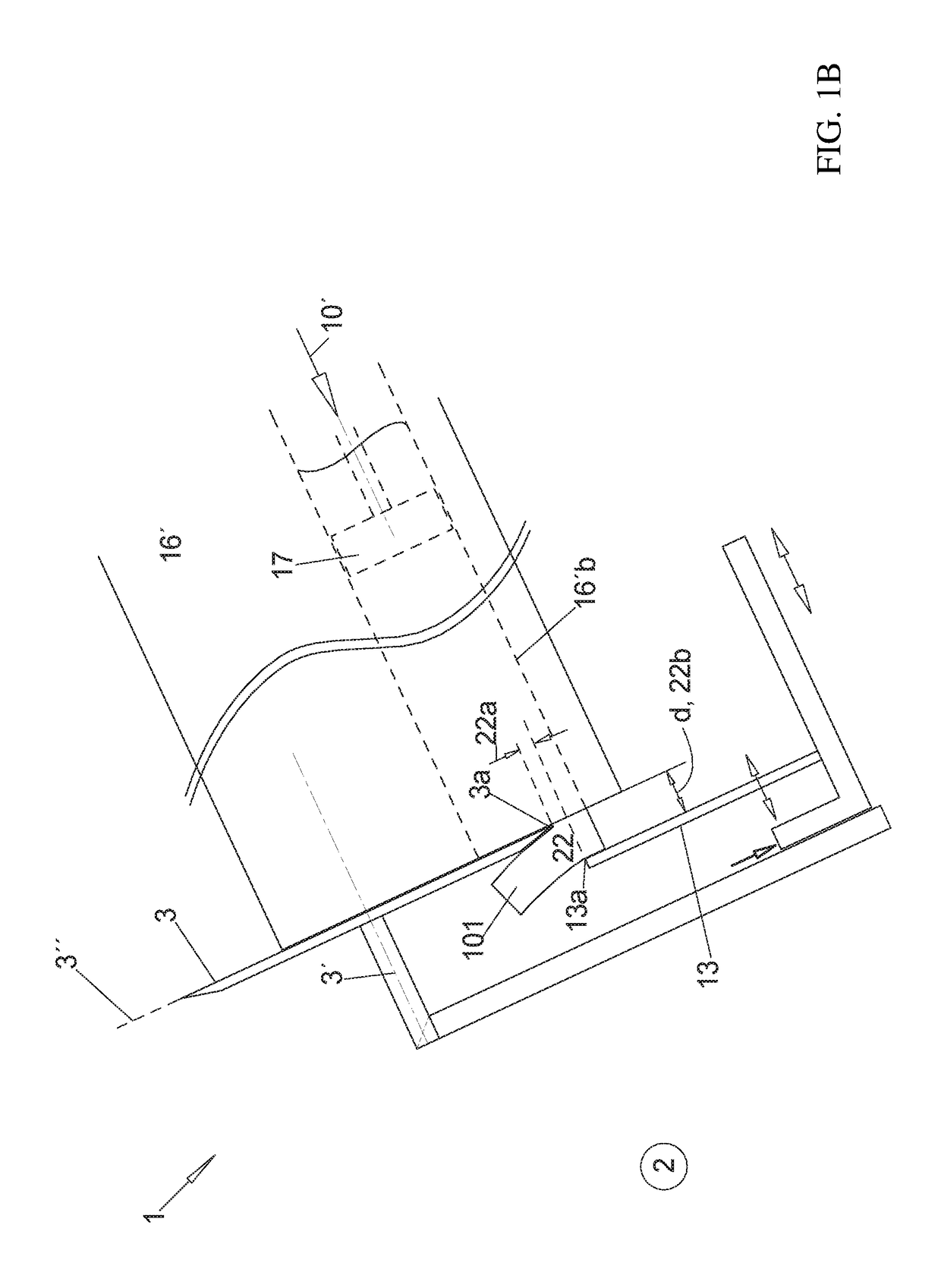Cutting unit and cutting process
a technology of cutting unit and cutting process, which is applied in the direction of meat processing devices, meat shaping/cutting, metal working apparatus, etc., can solve the problems of complex mechanical configuration and disadvantages of using them together with the stop plate used as a stop for the strands
- Summary
- Abstract
- Description
- Claims
- Application Information
AI Technical Summary
Benefits of technology
Problems solved by technology
Method used
Image
Examples
first embodiment
[0079]FIG. 1 illustrates a side view an analogy to the view of FIGS. 1A through 2D of a longitudinal cut through a form tube and a cutting unit 1, only in order to clarify the different layers of directions and planes that are being used.
[0080]The product strand 100 is moved onto a contact surface 16a advantageously in a form tube 16′ with a circumferentially closed cross-section in the feed direction 10′, which is typically the main extension direction of the product strand 100, wherein the feed direction 10′ is the direction towards the forward open end of the form tube 16′ where the blade 3 is arrange for cutting off the slices 101.
[0081]The blade 3 illustrated herein is a strip-shaped blade 3, which has a straight cutting edge 12a and which is driven to oscillate in the direction of this edge 12a in order to achieve the desired cutting effect.
[0082]The straight cutting edge 12 of the blade 3 that is ground advantageously only one side, namely on the side that is oriented away fr...
third embodiment
[0099]In FIGS. 2A-2D the stop plate 13 is adjustable in the axial direction 10 relative to the blade 3 not only before a beginning of cutting up the product strand in order to determine the thickness d of the slices 101 to be produced but also during each individual cutting process.
[0100]When the blade 3 and the stop plate 13 are attached at the cutting frame of the cutting unit 1 as illustrated the stop plate 13 shall be movably attached in a controlled manner in the direction 18 / 18′ at the cutting frame, also during the individual cutting processes not only before the cutting process begins. In the axial direction 10 the stop plate 13 is always adjustable relative to the cutting frame in order to predetermine a thickness d of a slice 101.
[0101]In FIGS. 1A through 2B the rotating blade 3 is attached in the cutting frame so that it is rotatable about its blade axis 3′ so that all blade movements besides the blade rotation are jointly performed by the cutting frame and the blade 3 as...
PUM
 Login to View More
Login to View More Abstract
Description
Claims
Application Information
 Login to View More
Login to View More - R&D
- Intellectual Property
- Life Sciences
- Materials
- Tech Scout
- Unparalleled Data Quality
- Higher Quality Content
- 60% Fewer Hallucinations
Browse by: Latest US Patents, China's latest patents, Technical Efficacy Thesaurus, Application Domain, Technology Topic, Popular Technical Reports.
© 2025 PatSnap. All rights reserved.Legal|Privacy policy|Modern Slavery Act Transparency Statement|Sitemap|About US| Contact US: help@patsnap.com



